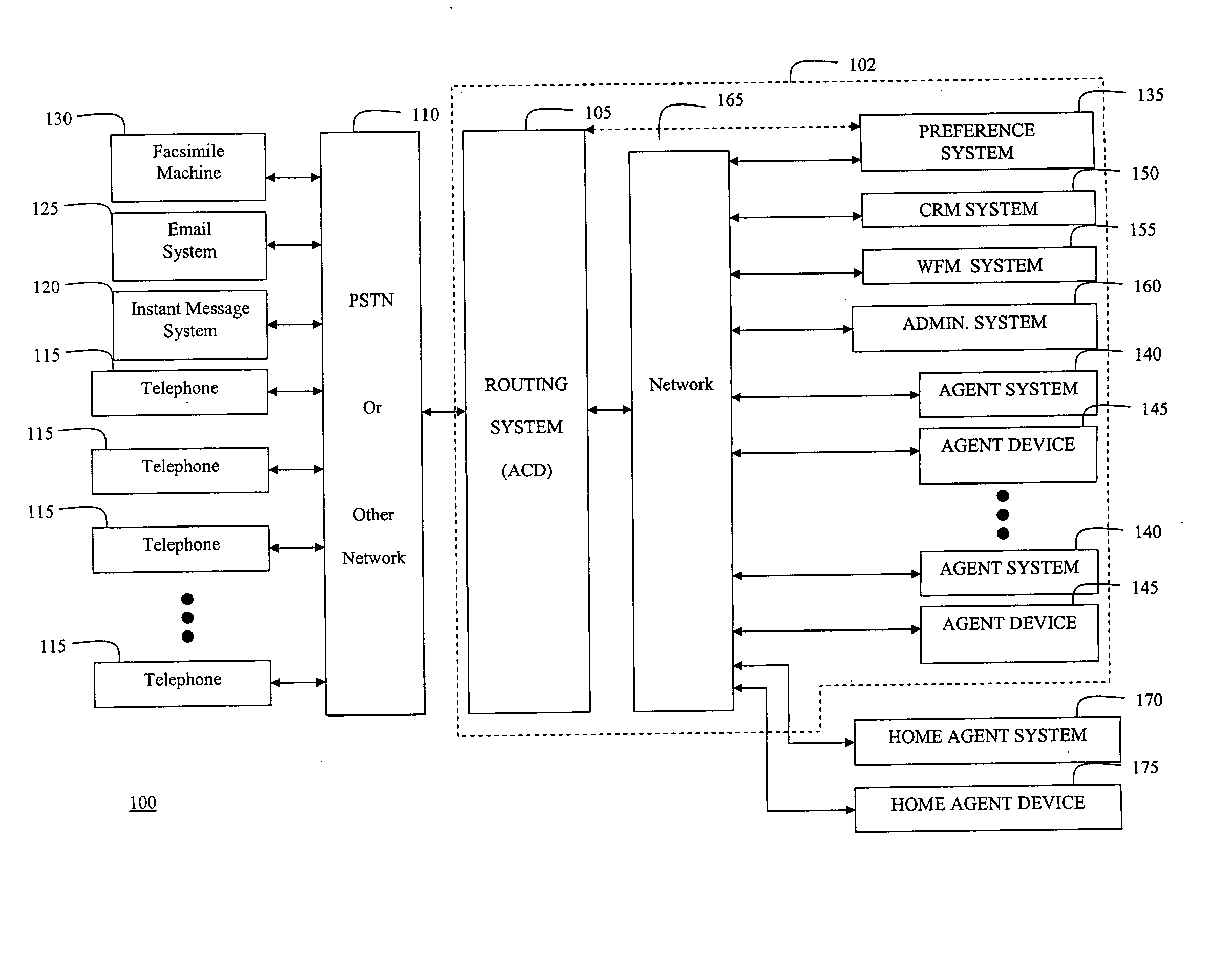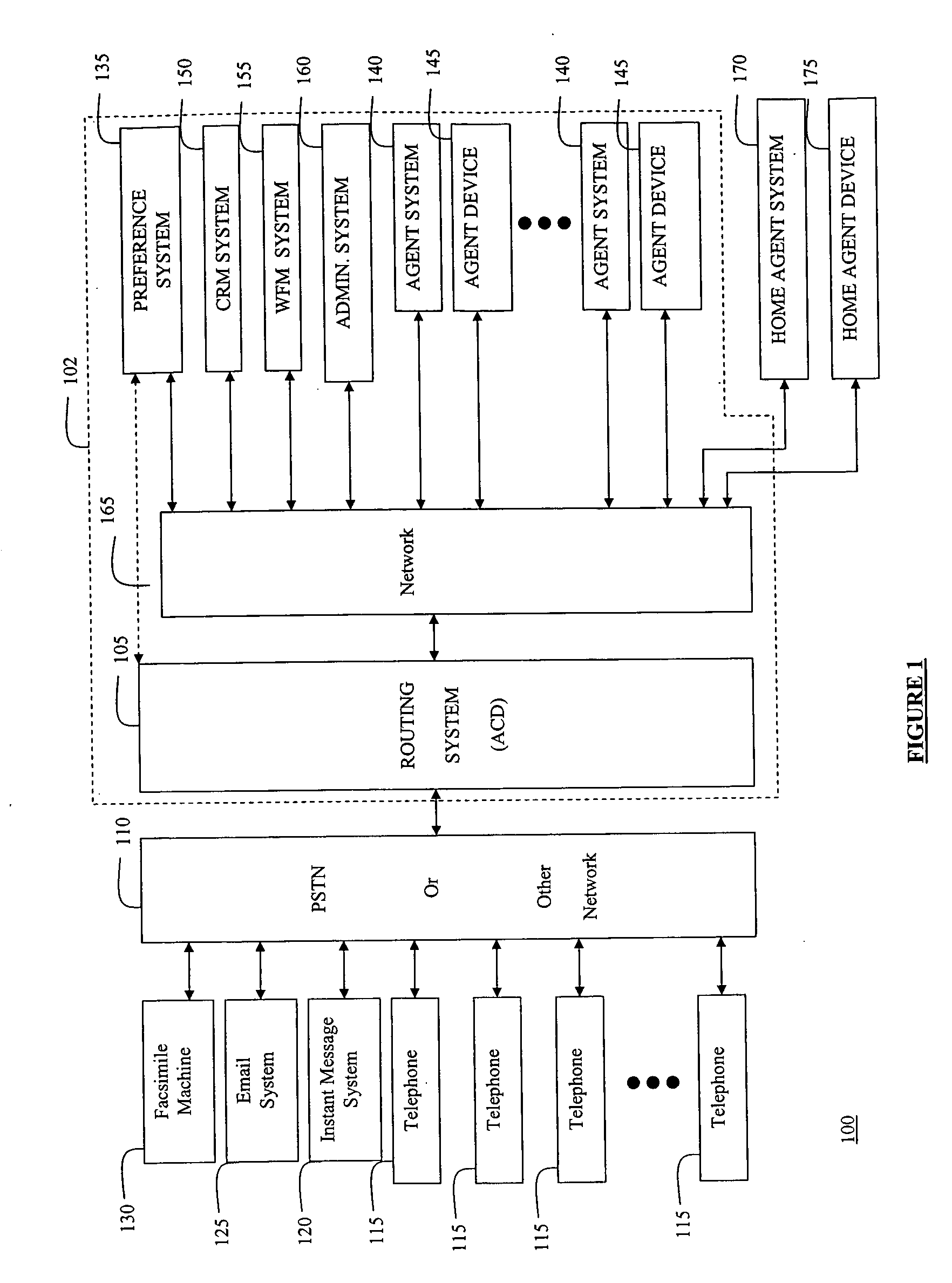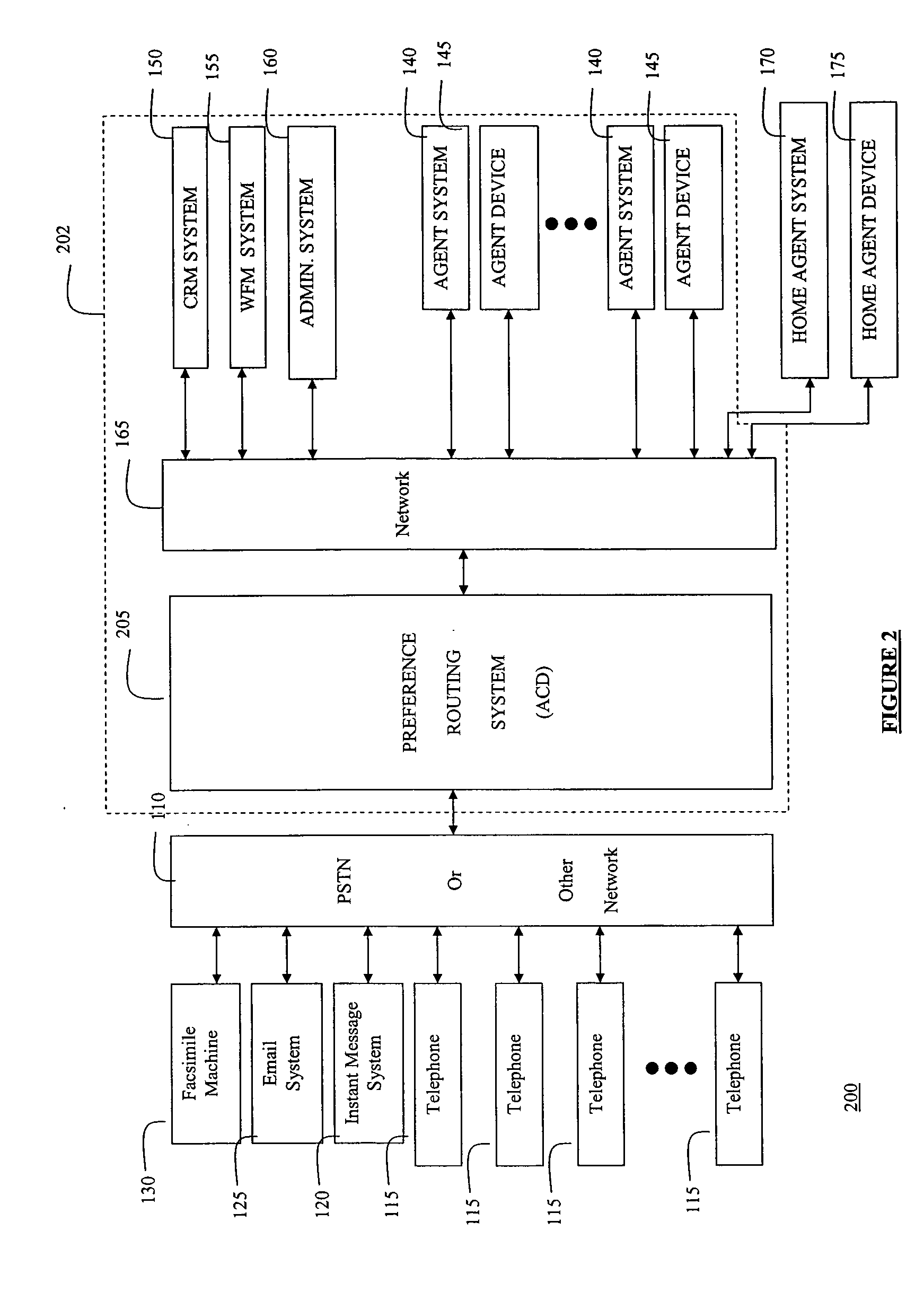Contact-center routing based on incentives and/or agent preferences
a technology of incentives and agent preferences, applied in the field of contact center routing, can solve the problems of rare or cost-effective routing to an available agent without corresponding skills, uncoordinated and unsystematic routing, and inability to meet the needs of agents,
- Summary
- Abstract
- Description
- Claims
- Application Information
AI Technical Summary
Benefits of technology
Problems solved by technology
Method used
Image
Examples
example 1
Marketplace
[0089] The dynamic expression of agent preferences in FIG. 11 occurs in a contact center on a continual basis. Contact-center management monitors the performance of the contact center through the WFM system, the CRM system, the administrative system, the preference system, the ACD and / or any other system capable of presenting information about aspects of the performance of the contact center. The contact center handles different types of service requests.
[0090] Assume that during operation of the contact center, one type of service request suddenly increases and the call center begins queuing this type of service request. As the volume of this particular type of service request in the queue of the ACD increases, network condition information is communicated to the preference server reflecting the increase, and management adjusts incentives provided to the agents for handling this type of service request. The incentive is in the form of redeemable points. This has a tend...
example 2
Incentive for Agent Staffing
[0091] During operation of a contact center, the contact center experiences a significant increase in two types of service requests. The increase is significant enough to exceeds the ability of the available pool of agents to handle the service requests appropriately. Management becomes aware of the increase through network conditions communicated from the ACD to the preference server and / or forecasting information from the WFM system. This causes management to increase incentives offered for agents to become staffed or otherwise increase their availability to handle the increased volume.
[0092] Some agents who are not scheduled to work have a preference level set that corresponds to their willingness to be staffed outside of their normal schedule in response to incentives offered by management. If the incentives offered by management exceed the preference level of the agent for unscheduled staffing, the agent has appropriate skills, and the contact-cent...
PUM
 Login to View More
Login to View More Abstract
Description
Claims
Application Information
 Login to View More
Login to View More - Generate Ideas
- Intellectual Property
- Life Sciences
- Materials
- Tech Scout
- Unparalleled Data Quality
- Higher Quality Content
- 60% Fewer Hallucinations
Browse by: Latest US Patents, China's latest patents, Technical Efficacy Thesaurus, Application Domain, Technology Topic, Popular Technical Reports.
© 2025 PatSnap. All rights reserved.Legal|Privacy policy|Modern Slavery Act Transparency Statement|Sitemap|About US| Contact US: help@patsnap.com



